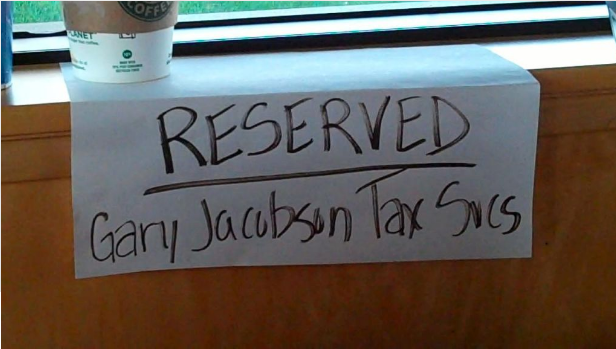Cathy Harvey is a single mom raising three sons with special needs. They each have Cerebral Palsy, autism, and attention deficit disorder. During the week, Harvey is up before the sun to get her boys ready for school. Patricia Nazario stopped by their San Fernando Valley home to see the morning routine.
Cathy Harvey goes into automatic pilot during her morning routine. Dakota, left, and Dylan, right, eat breakfast while she dresses Daniel in the bedroom. The boys are enrolled in special-education classes at schools in the Los Angeles Unified School District.
Daniel, 15-years-old, has Spastic Cerebral Palsy.
Dylan, 11-year-old, has high-functioning autism.
Dakota, 9, also has autism and attention deficit disorder.
On weekdays, Cathy Harvey’s alarm clock goes off 4:30 in the morning. By 5:00, she’s waking up Daniel.
“Good morning, sleepyhead,” she says to her eldest son. Daniel’s head rested on a Spider-Man pillow and he was curled up in the fetal position. Cathy carried him across the short hall to her bedroom. She had already made the bed and spread out a blue bath towel.
“OK,” she says. “Here we go.”
She ran water through his feeding tube.
“This might be a little cold,” Cathy says. “Clean out your tube, ok? From your night feeding.”
A few minutes later, she gave him his medication.
“Prevacet’s for digestion. Robinal’s so he doesn’t drool on his shirt all day,” said Cathy.
Daniel moaned and cried while his mother changed his diaper and dressed him. Cathy says Daniel was seven-months old the first time she heard a doctor say the words, Spastic Cerebral Palsy.
“What’s that? What can I do to fix it?” she says. “Well, they come to you and say, ‘There’s nothing you can do to fix it. This is something you’ve got to live with.’”
By now, the 41-year-old mom has embraced it. And, like a point guard on the court, she ricochets between the bedroom, where she tends to Daniel’s fussiness… and the kitchen, where she prepares bacon, eggs, and toast for Dylan and Dakota. Both boys have something else: the genetic condition, Noonan’s Syndrome.
“My kids know that they’re different,” said Cathy.
But Cathy Harvey doesn’t pity her kids. She pushes them.
“Dakota, what does flawless mean?” she asked her youngest, as she gave him a pop quiz over breakfast.
“What about, plead?” asked Cathy.
“Plead means to beg,” said Dakota, between bites.
“Perfect!” squealed Cathy, as she kissed his forehead. “You got them all right! Good job!”
Dakota was still wearing his Speed Racer pajamas. His mom was in jeans and flip-flops.
“Those three kids mean the world to me,” says Cathy. “When I became a parent, it didn’t come with a direction book and it doesn’t say, you know, ‘I’m gonna give you a special-ed child.’”
There’s also no guide to help Cathy’s three disabled boys better understand their own limitations or challenges. So, this mom looks for moments to teach them how to cope with life. For example, I was at the house one day while Cathy was doing laundry, and Dylan got angry because he can’t find a specific pair of jeans.
“No… size… 8!” grunted Dylan.
“Dylan, stop!” demanded Cathy.
“Mom, there’s no… size 10!” whined Dylan.
“Dylan, don’t worry about it! Come here!” ordered Cathy. “All right, don’t worry about it, I said! Come here!”
On another afternoon, I tagged along for a long road trip inside the family van. Dakota had a meltdown because Cathy won’t let him listen to his favorite song – again.
“Dakota, you need to drink some water now,” said Cathy. “Take a deep breath.”
Dakota breathed deeply.
Dr. Douglas Vanderbilt is a Pediatrician and Autism Specialist at Children’s Hospital Los Angeles. He says a mom’s gentleness can help special-needs kids deal with the real world.
“And, that’s why it’s helpful, sometimes, to have a diagnosis, so that it’s not seen as a behavioral problem that has no basis. But is really a more cognitive processing, social communication difficulty that the child is having,” said Vanderbilt.
“And you need to have a lot of patience,” says Cathy Harvey. “And, yes, there are times that I have to go into the bathroom, do a little screaming dance, and come out and take a deep breath and say, OK, let’s try this again.”
Then, there are times when Cathy can’t run and hide, like when she and the boys are at the grocery store.
“I get questions asked, ‘Are they all three yours? Are they adopted? How could this possibly happen in one family?’” says Cathy. “That’s what I get. And my answer to that is, ‘I’m lucky, and blessed.’”
WEB RESOURCES:
Protection & Advocacy
Autism Society of America, L.A. Chapter
United Cerebral Palsy of Los Angeles
Part 2: Her Three Sons – School
Part 3: Her Three Sons – Resources


